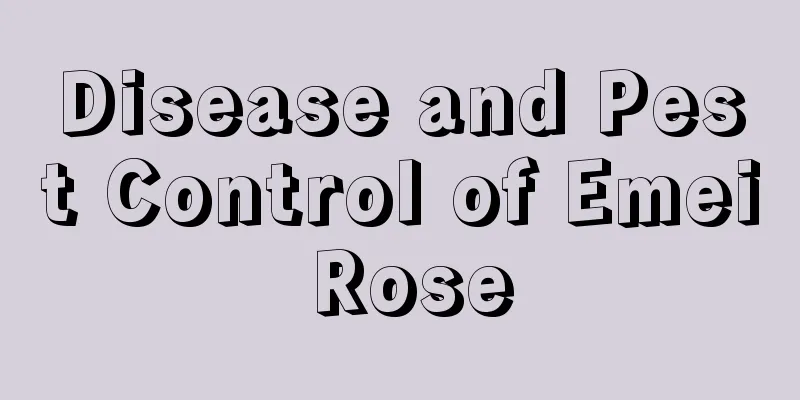Disease and Pest Control of Emei Rose

1. Powdery mildewIt is likely to develop on leaves, petioles and young shoots as well as flower buds. Some irregular white powdery spots will appear on the mature leaves, and then the diseased leaves will slowly turn brown from the tip or the edge of the leaves, which will eventually cause the entire leaf to slowly dry up and fall off. If young leaves are accidentally infected, the infection will gradually expand and become less obvious on the edges. White powdery spots will appear on both sides of the young leaves, and then cover the entire leaf. The leaves also begin to turn light gray or purple-red. If the petiole is infected, its internodes will begin to shorten, the stem will begin to become thinner, and some diseased shoots will appear dry and then covered with white powder. If the flower buds are infected, the pedicels will become deformed, or even die in severe cases. Prevention and control methods: Choose varieties that are resistant to powdery mildew. When pruning in winter, be sure to cut off all diseased branches and buds. In the early stage of the disease, you can apply less nitrogen fertilizer and more phosphorus and potassium fertilizers, so as to improve its disease resistance. In addition, attention should be paid to timely drainage after rain to prevent moisture from staying for a long time, thus reducing the occurrence of diseases. 2. Black spotIf the disease occurs, it usually affects its leaves, petioles and young shoots. When the leaves first start to become sick, some small purple-brown to brown spots will appear on the front. After expanding, they will become some round or irregular black-brown spots. Prevention and control methods: We can choose some drugs such as carbendazim or daconil, and then spray them on the diseased areas. 3. AnthraxThe spots that appear are usually on the edge of the leaves, and are approximately semicircular in shape. The edges of the spots are dark brown, and the color turns brown to light brown in the middle. Later, many small black dots will appear on the spots. This pathogen can usually overwinter on diseased fallen leaves. In a relatively warm and humid environment, the spores will germinate and infect the leaves. Prevention and control methods: You can carry out timely cleaning in late autumn and early winter, collect the diseased fallen leaves, and then burn them together. We also need to strengthen protection and provide appropriate repairs. Treat the denser branches and leaves, maintain good ventilation and ensure that the branches and leaves below receive light. Or you can use some medicines. |
<<: Disease and Pest Control of Rosa bromeliad
>>: Pest and disease control of wind orchid
Recommend
How to plant copper coin grass? Planting time and method
Planting time of copper coin grass The cultivatio...
What to do if the leaves of the tree turn black?
1. Cut off the black leaves When these black leav...
How to make bonsai of Photinia chinensis
Production time The production time of Chinese ph...
When is the best month to plant lily bulbs
When to plant lily bulbs The bulbs of lily of the...
Cultivation method of water hyacinth
Preparation for water hyacinth cultivation The ma...
Can pea hulls be used as fertilizer?
Pea hulls as fertilizer Pea shells can be used as...
When does the money tree bloom?
When does the money tree bloom? Many friends have...
Time and method of planting winter melon
Winter melon planting time 1. The best time to pl...
How often should I water the palm of hand?
How often should I water the palm of hand? For ne...
What is the best month to plant irises?
When to plant irises Iris is generally propagated...
Hongyun Dangtou Four Seasons Maintenance
Spring maintenance for a good year In early sprin...
Tips for Thinning Camellia Buds
Why do we need to thin the buds of camellia? Came...
Rose orchid...just gently break it, small buds will appear in 10 days, and the pot will be full of flowers in 1 month!
Just gently pull the rose and the new leaves will...
How to plant purple sweet potatoes when they sprout? How to plant purple sweet potatoes when they sprout?
Purple sweet potatoes are quite common in daily l...
Why doesn't bougainvillea bloom?
The flowering period of Bougainvillea varies slig...









